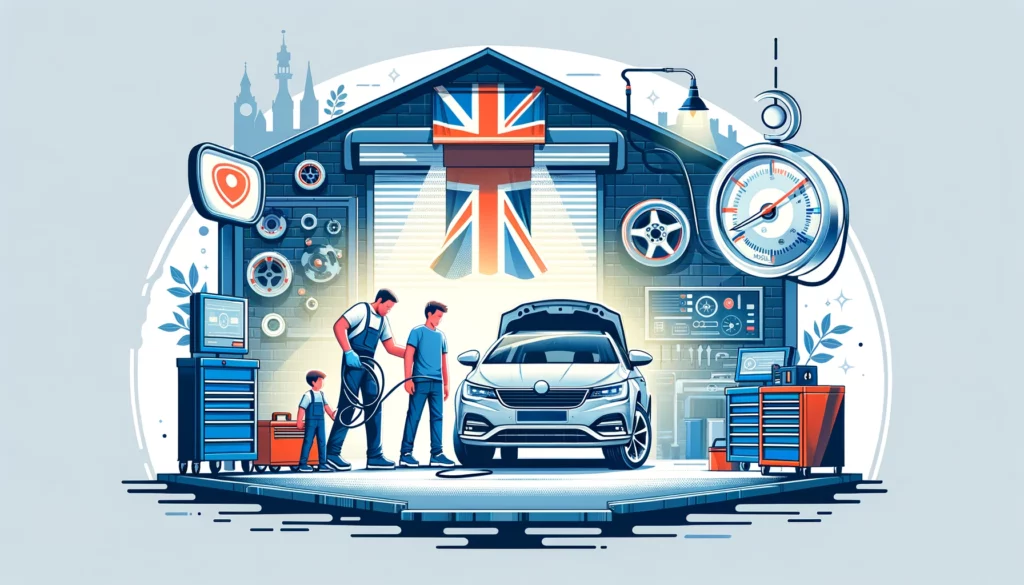Safety and efficiency of your vehicle are not just about convenience; they are about family safety, environmental responsibility, and adherence to national standards. The Ministry of Transport (MOT) test represents a critical checkpoint for every vehicle owner, ensuring that their automobile meets the minimum safety and environmental standards set by the UK government. But what does it take to keep your vehicle not just roadworthy but reliable for the long haul? This in-depth guide will unravel the evolution of MOT standards, underscore the indispensable role of regular servicing, and offer practical tips for maintaining your vehicle, all tailored to the needs of families in Horndean and beyond.
A Journey Through Time: The Evolution of MOT Standards
The Genesis of Vehicle Safety Checks
The MOT test, inaugurated in 1960, began as a rudimentary safety check for vehicles over ten years old, focusing on crucial elements like brakes, lights, and steering. This “ten-year test” marked the UK’s initial step towards ensuring vehicular safety at a time when the roads were becoming increasingly populated.
Advancements and Adjustments
As vehicles evolved and their numbers on the road swelled, the need for more stringent regulations became apparent. By 1967, the age requirement was adjusted to include vehicles over seven years old, and a decade later, in 1977, it was further revised to mandate annual tests for vehicles over three years old. Today’s MOT encompasses over 20 different checks, including emissions, seatbelts, and bodywork, reflecting the government’s commitment to both safety and environmental standards.
Shaping the Automotive Landscape
The impact of these evolving standards on the automotive industry cannot be overstated. Manufacturers are compelled to innovate, producing vehicles that not only meet but exceed the government’s safety and environmental benchmarks. This has led to significant advancements in vehicle technology and safety features, making today’s cars safer and more efficient than ever before.
The Present and Future of MOT Standards
Comprehensive Safety and Roadworthiness Inspection
The current MOT test is a thorough examination of a vehicle’s safety and roadworthiness, assessing everything from the body and structure to the fuel system and exhaust emissions. This comprehensive approach ensures that vehicles on the road do not pose a risk to their occupants or the environment.
Adapting to Technological Innovation
As vehicle technology advances, the MOT test and servicing requirements evolve in tandem. Modern vehicles, equipped with sophisticated features like lane departure warnings and adaptive cruise control, necessitate specialized equipment and knowledge for testing and maintenance, underscoring the importance of staying abreast of industry developments.
The Cornerstone of Vehicle Longevity: Regular Servicing
Beyond MOT: The Role of Routine Maintenance
While passing the MOT test is essential, regular servicing is the linchpin of vehicle longevity and reliability. Routine checks and maintenance go beyond the scope of the MOT, addressing wear and tear, optimizing performance, and preempting potential failures.
Safety, Efficiency, and Cost Savings
Regular servicing is not just about keeping your vehicle running; it’s about ensuring it runs safely and efficiently. This proactive approach not only enhances road safety but also offers significant cost savings by preventing expensive repairs and extending your vehicle’s lifespan.
Dispelling Myths and Embracing Maintenance
Addressing Misconceptions
Common myths surrounding servicing and MOT standards often deter vehicle owners from adhering to recommended maintenance schedules. Contrary to the belief that frequent use negates the need for servicing, even low-mileage vehicles require regular checks to maintain optimal functionality.
The Imperative of Adherence
Following the manufacturer’s recommended servicing schedule is not merely a suggestion—it is a critical component of vehicle care. Neglecting these recommendations can lead to diminished performance, safety risks, and potential MOT failures.
Practical Maintenance Tips for Every Vehicle Owner
Embracing Routine Checks
Simple, regular maintenance tasks can significantly contribute to your vehicle’s condition and reliability. From monitoring tire pressure to ensuring fluids are topped up, these practices can prevent common issues that lead to MOT failures.
Professional Servicing vs. DIY
While some maintenance tasks are suitable for the DIY enthusiast, professional servicing is invaluable for its depth of inspection and the ability to identify and rectify complex issues, ensuring your vehicle remains safe and efficient for the road ahead.
The Intersection of Technology and Maintenance
Navigating the Digital Age
The rapid advancement of vehicle technology not only enhances safety and performance but also introduces new challenges in maintenance and MOT testing. Staying informed and choosing a garage that invests in the latest diagnostic tools and training is crucial for modern vehicle care.
Conclusion: A Roadmap for Responsible Vehicle Ownership
In sum, the journey through MOT standards and the essential nature of regular servicing paints a clear picture: diligent maintenance is not just a regulatory obligation; it is a cornerstone of safe, efficient, and environmentally responsible vehicle ownership. For families in Horndean and beyond, choosing a trusted local garage like Windmill Garage, which prides itself on approachable, expert service, can make all the difference in navigating the road ahead with confidence and peace of mind. Remember, a well-maintained vehicle is not just a requirement; it’s a commitment to your family’s safety and the well-being of the community.

